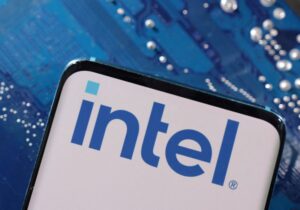Intel’s Credit Rating Cut: Insights and Implications for Investors
The financial landscape for chipmaker Intel Corp has shifted as S&P Global Ratings recently downgraded its credit rating from ‘BBB+’ to ‘BBB’. This adjustment stems from a slow recovery in business performance coupled with uncertainties tied to recent management changes.
Revenue Stagnation Raises Concerns
For the first nine months of 2023, Intel reported revenue of approximately $38.84 billion. This figure marks a standstill compared to the previous year, falling short of the expectations set forth by S&P Global. This stagnation is particularly alarming in an industry characterized by rapid growth and aggressive competition, especially from key rival Taiwan Semiconductor Manufacturing Co. (TSMC).
Management Changes Create Uncertainty
A significant factor contributing to this downgrade is the departure of CEO Pat Gelsinger, a pivotal figure in the company’s integrated manufacturing strategy. His exit raises questions about the continuity and execution of Intel’s ambitious turnaround plan. While the company has indicated that its core business strategy will largely remain unchanged, S&P Global emphasizes the unpredictability that often accompanies leadership transitions. The potential for strategic shifts under new management could delay Intel’s recovery timeline, which investors should watch closely.
Outlook: A Silver Lining?
Despite these challenges, S&P Global has maintained a "stable" outlook for Intel. This reflects a belief that the company is positioned for growth following a modest recovery anticipated next year. While the road to recovery may be fraught with challenges, there are several factors that could play to Intel’s advantage:
-
Innovation Potential: Intel is historically known for its technological advancements. Continued investment in research and development could restore its competitive edge, particularly in high-demand sectors such as artificial intelligence and cloud computing.
-
Market Positioning: As global demand for semiconductors grows, Intel has the opportunity to capture a larger share of this expanding market. The company’s established relationships with major tech firms could facilitate quicker recovery as they ramp up chip demand.
- Strategic Partnerships: Enhancing collaborations with industry partners could accelerate Intel’s innovation pipeline. Such alliances may also improve profitability and efficiency in production processes.
Conclusion: A Time to Monitor
For investors, the downgrade of Intel’s credit rating is a clarion call to remain vigilant. While the company faces challenges, its potential for recovery should not be dismissed outright. As the semiconductor sector continues to evolve, keeping an eye on Intel’s strategic moves, product innovations, and leadership developments will be crucial for those considering investment in the tech giant.
At Extreme Investor Network, we remain committed to analyzing not just the numbers, but also the broader market implications and future opportunities that arise from shifts like these. Stay tuned for more insights as we continue to monitor Intel’s journey and the semiconductor industry’s dynamic landscape.

